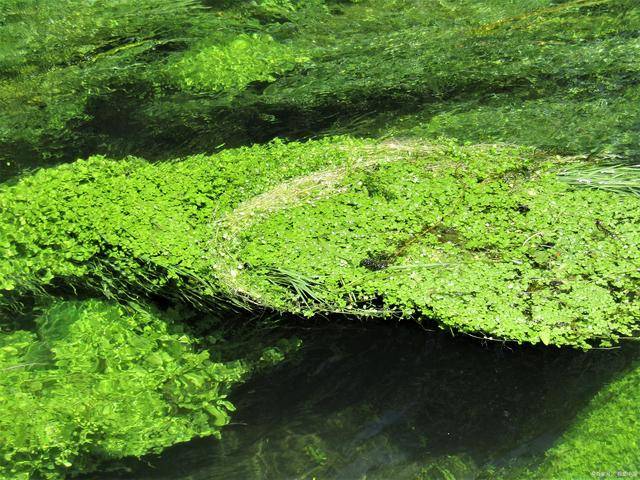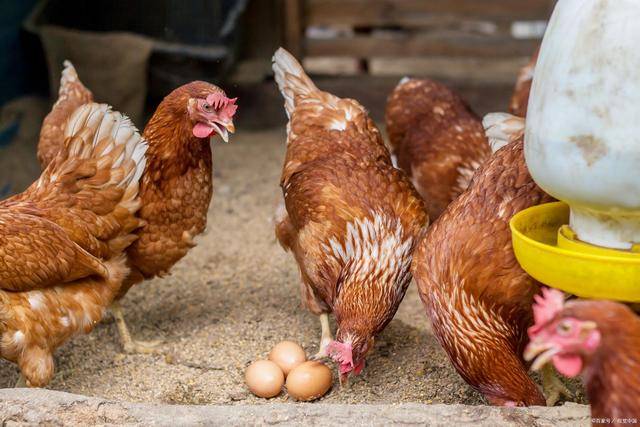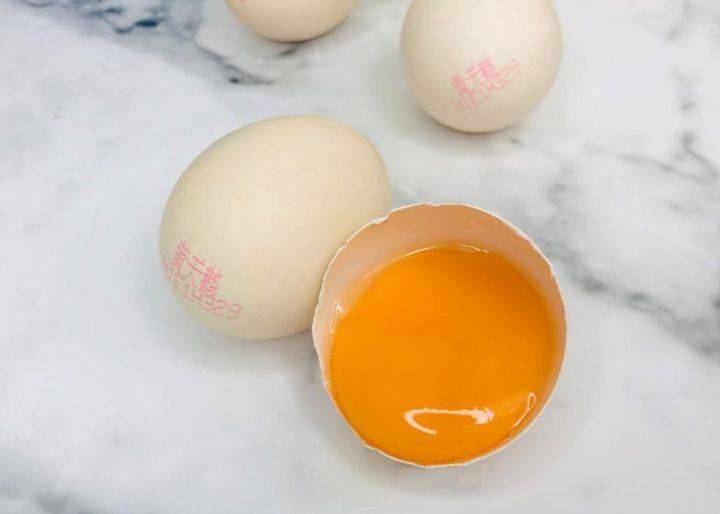Natural Astaxanthin: For Deeper, More Vivid Egg Yolk Color
Inthe global egg consumption market, yolk color has become a key indicator for measuring quality and international purchasing preferences. Research indicates that vibrant yolks are not only more favored by consumers but also represent higher nutritional value due to their rich natural antioxidant content.
However, laying hens cannot synthesize carotenoids—the core components determining yolk color. Astaxanthin, one of nature'ですmost potent natural antioxidants, holds the key to solving this challenge. Approved as a safe feed additive in multiple global markets (e.g., China'です GB/T 23745-2009 standard), astaxanthin delivers reliable solutions for enhancing egg quality through its exceptional coloring and antioxidant properties.
Green Spring Technology now introduces all-natural astaxanthin raw materials, specifically designed to meet the demands of the international premium egg market. Our products are committed to:
✨ Significantly improving egg yolk color and visual quality
✨ Increasing natural antioxidant content in eggs
✨ Helping farming enterprises and exporters build differentiated competitive advantages
We have established an internationally compliant quality control system, providing stable, reliable products and professional technical support to global customers.
1 Green Spring Technology Sets New Standards for Natural Astaxanthin Raw Materials
Within the global astaxanthin supply chain, origin is the cornerstone determining its quality, safety, and efficacy. Currently, astaxanthin primarily originates from two pathways: synthetic production and natural extraction.
Research indicates that synthetic astaxanthin is a mixture of multiple isomers, generally exhibiting lower antioxidant activity and bioactivity than natural astaxanthin. This limits its application in safety-critical sectors like food and feed.
In contrast, natural astaxanthin, with its superior bioactivity and safety profile, has become the essential choice for high-end applications. Among numerous natural sources, Haematococcus pluvialis and Saccharomyces cerevisiae are widely recognized by academia and industry as the most ideal commercial sources.
Green Spring Technology strategically focuses on supplying astaxanthin raw materials from these two premier natural sources:
・ Haematococcus pluvialis-derived astaxanthin: As the microalgae with the highest natural astaxanthin accumulation capacity, we precisely control cultivation environments to ensure the highest astaxanthin content and activity in our algae powder, making it the flagship choice for high-end applications.
· Astaxanthin from Saccharomyces cerevisiae: Our optimized fermentation processes (such as continuous feed cultivation) significantly enhance yeast cell density and astaxanthin synthesis efficiency, providing robust assurance for scalable, stable supply.
Green Spring Technology is committed to delivering natural astaxanthin solutions with clear origins, pure quality, and high stability to global clients, safeguarding your product value from the source.

2 Green Spring Technology's High-Deposition-Rate Astaxanthin Raw Material: Precisely Enhancing Premium Egg Yolk Coloration
During egg yolk coloring, astaxanthin deposition efficiency within laying hens directly determines yolk color intensity and stability. Through in-depth exploration of astaxanthin's metabolic mechanisms and technological innovation, Green Spring Technology has successfully overcome absorption barriers. This ensures efficient astaxanthin deposition in egg yolks, delivering long-lasting, vibrant coloring.
Stability Assurance: Effective Transfer from Raw Material to Egg Yolk
Research indicates astaxanthin exhibits exceptional thermal stability, with a decomposition temperature as high as 250°C. This property ensures its bioactivity is preserved during feed processing, laying the foundation for subsequent bioavailability. Green Spring Technology employs a unique encapsulation process to further enhance astaxanthin's stability in the digestive tract environment, guaranteeing active ingredients reach the absorption site intact.
High-Efficiency Absorption Mechanism: Precise Targeting to Yolk Deposition
The absorption and transport of astaxanthin within the body is a precise process:
· Binds to lipoproteins, entering the bloodstream via the lymphatic system
· Efficiently targeted for transport to the ovaries and developing follicles
· Achieves specific deposition within the yolk
Evidence-Based Data: 21.3 mg/kg as the Optimal Dosage
Extensive experiments confirm that adding 21.3 mg/kg astaxanthin to the diet maximizes deposition rates in laying hens. This optimized dosage ensures optimal coloration while avoiding absorption inhibition associated with higher doses, maximizing benefits.
Technological Breakthrough: Enhanced Bioavailability
Green Spring Technology's patented technology:
· Improves astaxanthin release efficiency in the digestive tract
· Strengthens binding capacity with transport carriers
· Optimizes deposition specificity in target tissues

3 Green Spring Technology Astaxanthin Raw Material Comprehensively Enhances Egg Quality and Farming Efficiency
In layer production, Green Spring Technology's natural astaxanthin ingredients have transcended their role as mere coloring agents, demonstrating comprehensive advantages in enhancing egg quality, improving hen health, and boosting farming profitability.
Ensuring Production Performance, Laying the Foundation for Quality
Research indicates that adding astaxanthin to layer diets has no negative impact on key production metrics such as laying rate, egg weight, and feed-to-egg ratio. Multiple trials confirm that appropriate astaxanthin supplementation (e.g., 15 g/kg in diets for 24-week-old Hy-Line Brown layers) can significantly increase laying rate and egg weight while reducing feed conversion ratio. This indicates that Green Spring Technology's astaxanthin coloring solution does not compromise normal egg production performance but instead provides a solid foundation for stable production of premium eggs.
Significantly Improve Egg Quality and Market Competitiveness
Core Coloring Effects: Stable and Significant
Domestic and international studies consistently show that adding astaxanthin to diets effectively improves yolk color and luster. Within a certain range, higher addition levels result in deeper yolk color, significantly enhancing yolk color scores and redness values to meet consumer preferences for ideal yolk color.
Extends Egg Shelf Life
Adding Haematococcus pluvialis astaxanthin to laying hen diets effectively slows the decline in yolk index and yolk color during 8-week storage at 4°C and 25°C. This demonstrates that astaxanthin not only enhances the appearance of fresh eggs but also helps maintain egg quality during storage.
Enhancing intrinsic nutritional value
Research indicates that egg yolks supplemented with astaxanthin exhibit optimized ratios of unsaturated fatty acids (such as oleic acid, linoleic acid, and arachidonic acid). This demonstrates that astaxanthin not only improves appearance but also elevates the intrinsic nutritional value of eggs.
Improving hatching egg quality and reproductive performance
For breeding flocks, astaxanthin offers unique benefits. Studies indicate that adding 0.5%-1.5% astaxanthin to the diet can increase fertilization rates, hatchability, and healthy chick rates for breeding eggs. By protecting rooster testicular function and improving semen quality, astaxanthin enhances reproductive efficiency at the source, delivering more healthy chicks to farms.
Strengthening Organism Health, Ensuring Sustained Production
Exceptional Antioxidant Protection
Astaxanthin's unique molecular structure grants it powerful free radical scavenging capabilities. Supplementing layer diets with astaxanthin significantly enhances antioxidant capacity, increases superoxide dismutase and glutathione peroxidase activity in liver and serum, and protects laying hens from oxidative stress damage.
Comprehensive Immune Function Enhancement
Appropriate levels of astaxanthin significantly elevate serum immunoglobulin G (IgG) content in laying hens, boosting antibody levels, T-lymphocyte activity, and immune organ function. This means Green Spring Technology's astaxanthin not only improves egg quality but also helps hens build stronger disease defenses, reducing health risks during production.
Comprehensive Application Value
Green Spring Technology's natural astaxanthin offers a multi-benefit solution for layer farming: effectively improving yolk color while enhancing egg nutritional value and hen health. Ultimately, it helps farming enterprises produce higher-quality, more market-competitive eggs, maximizing economic returns.

4 Contact Green Spring Technology to Begin a New Chapter in Egg Value Enhancement
Natural astaxanthin, particularly premium-grade sources derived from Haematococcus pluvialis and Saccharomyces cerevisiae, is emerging as a key driver for egg industry advancement. Through scientifically formulated dietary supplementation, Green Spring Technology's natural astaxanthin not only significantly enhances egg yolk color but also comprehensively improves hatching performance of breeding eggs, boosts laying hens' antioxidant capacity and immune function, delivering tangible efficiency gains for farming enterprises.
While astaxanthin research continues to deepen, its remarkable effects in layer production have been thoroughly validated. Green Spring Technology remains committed to:
· Optimizing astaxanthin absorption and utilization efficiency in laying hens
· Developing application solutions better suited for large-scale farming
· Advancing innovative applications of natural astaxanthin in livestock and poultry farming
Take action now to co-create a new future for egg value
We sincerely invite feed manufacturers, farming groups, and industry partners to explore innovative applications of natural astaxanthin:
Exclusive Partnership Channel
· Obtain complimentary samples and technical support
· Customize personalized application solutions
· Schedule professional technical consultations
连络
· Mobile/WhatsApp: +86 13649243917
· Email: helen@greenspringbio.com
· Official Website: https://www.greenspringnatural.com/
Choosing Green Spring Technology means choosing:
√ Stable and reliable raw material supply
√ Scientifically validated application solutions
√ Professional and continuous technical support
“Let's collaborate to enhance your products with natural astaxanthin technology and jointly pioneer a brighter future for the egg industry!”
Contact us now for your exclusive solution!
参考:
[1] ramdhan d n, dieudonne md, wang h, et al。鶏卵の生産性能、抗酸化能力、アスタキサンチン濃縮および卵質に対するアスタキサンチン含有トウモロコシの影響[j]。中国の動物科学雑誌,2022,58(9):214-219,227。
[2] yang y, seo j m, nguyen a, et al。緑藻haematococcus pluvialisからのアスタキサンチン豊富な抽出物は、apoli- poprotein eノックアウトマウスの血漿脂質濃度を低下させ、抗酸化防御を強化する[j]。^ a b c d e f g h i(2011年)、117 - 117頁。
[3] lv tingting, liu haili, feng xiaohui, et al。アスタキサンチンの発生源および生物活性に関する研究の進展[j]。中国の食品と栄養,2016,22(7):67-70。
[4]孫Weihong。異なる原料からのアスタキサンチンの分離と調製およびその構造活性相関[d]。2015年-中国海洋大学教授。
-
Prev
Highly Stable Natural Astaxanthin Enhances Salmon's Uniform Color
-
次
Farewell to Synthetic Colors: Phycocyanin Ushers in the Era of Natural Blue for Food & Beverage


 英語
英語 フランス
フランス スペイン
スペイン ロシア
ロシア 韓国
韓国 日本
日本



